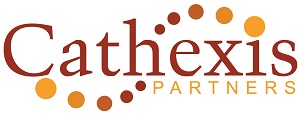 Special to the Philanthropy Journal
Special to the Philanthropy Journal
By Daniella Dowiak
If your organization is like most nonprofits, your fundraising strategy includes peer-to-peer campaigns and events. These types of programs are great ways to extend your fundraising reach; but, what do you do if your peer-to-peer results go flat?
Here are some impactful things you can do to today to breathe new life into your peer-to-peer fundraising campaigns and events:
 Know the basics.
Know the basics.
Sometimes taking two steps forward requires taking a step back. Spend some time making sure you have a solid foundation for peer-to-peer fundraising. Read The Nonprofit’s Guide to Peer-to-Peer Fundraising for tips and techniques on how to plan, launch, run, and wrap up successful online campaigns.
Re-evaluate your software platform.
If you don’t have a software platform designed for peer-to-peer fundraising, or if you do but the software is difficult for participants and staffers to use, it might be time to look for a new platform. To get you started, here’s a guide for choosing the right peer-to-peer fundraising platform for your nonprofit.
Put yourself in your site visitors’ shoes.
Go to the home page of your website, and pretend you have never been to the page before. Step through the online process for your peer-to-peer fundraising campaign. Ask yourself the following questions, and work with your website manager to make improvements:
- Does the campaign grab my attention?
- Is it clear what I should do if I want to learn more, register, or donate?
- How many clicks does it take to sign up or donate?
- How many questions am I asked during the registration or donation process (and, do we really need to ask all of them)?
- If I’m donating, is it easy to find the person I want to donate on behalf of?
- If I’m registering as a fundraiser, how easy is it to sign up and start fundraising?
Think about your story.
An impactful story will get your supporters excited about helping you raise funds, and will give them a story to share with friends and family. Be sure that the story and communications for your fundraising campaign or event answer these questions:
- What makes our organization unique?
- What impact are we having on our mission?
- What problem does this particular peer-to-peer campaign solve?
- How do we want people to feel about our campaign (inspired, outraged)?
Ask — clearly.
Many of your supporters will be happy to participate and help you raise funds — but you have to ask! In every communication, make sure that your call-to-action is clear. Remember that asking someone to register and asking someone to fundraise are two different asks: If someone hasn’t registered yet, your messaging should be about asking them to register (not “register and fundraise”). Once someone is a registered participant, then you can target them with fundraising communications.
Use a multi-pronged approach.
Sending an email and direct mail to your constituents is a good way to recruit participants, but don’t stop there. Use other communication channels: social media, online advertising, signs at your organization’s events, public service announcements, local TV and radio shows — all of these outlets can be used to ask people to sign up to help your organization.
Know your key participants.
For most peer-to-peer events, a small percentage of participants raise the most funds. These super-fundraisers usually are people most impacted by or dedicated to your cause. So, how do you find more people like them? That really depends on your specific organization, but once you ask yourself the question, you’re on the right track to acquiring more of your biggest assets.
Ask for more.
The supporters who register to fundraise for your organization can be your biggest cheerleaders. Ask your top performers how else they may want to help, and see if they can use their story to recruit other participants. You’ll likely get more fundraisers on board and deepen your relationship with your participants.
Connect dollars to something real.
Associate the donation levels for your campaign or event with what the funds could provide for your mission. Letting supporters know that their donation could help feed a family of six or send a child to school for a year is more impactful than simply asking for a specified amount of money.
Have a follow-up plan.
Create standard processes for communications used after someone registers for your campaign and commits to your cause. Some of these can be automated, while others may require action from a staff member. Some things to consider:
- Create a process for communicating with fundraising team captains.
- Have a plan for reaching out to top fundraisers.
- Develop a clear thank you program to ensure fundraisers and donors feel appreciated.
Reach out directly.
Pick up the phone and call your fundraisers. Ask them how things are going, and thank them for their work. Or, write a personalized note/email to thank fundraisers for their support. Also consider adding texts to the mix — they’re a great way to send a virtual high-five to fundraisers as they reach milestones.
Strategize your changes.
Choosing what improvements you want to make to your campaigns and events can seem overwhelming — but if you’re strategic and focus first on the changes that will help raise more funds for your organization, you’ll be on the right track. This may mean that you don’t rebrand your event series this year or revamp the website design, but instead, focus on creating clearer, more impactful messaging that reaches new audiences.
When it’s time to give your peer-to-peer fundraising campaigns a boost, you don’t necessarily need to overhaul them. A fresh perspective and a few simple changes can go a long way toward reinvigorating your peer-to-peer program!
Daniella Dowiak is an Account Manager at Cathexis Partners. She has worked in the nonprofit sector for more than eight years. With a deep understanding of nonprofits’ limited resources, she is passionate about helping organizations get the most out of their technology.





